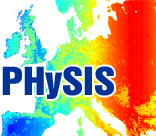Recent advances in the fields of electronics and optics technology have permitted the design and development of sophisticated hyperspectral imaging sensors, which are able to capture the naturally occurring imaging spectra at a very high spatial resolution forming three-dimensional data cubes. In addition, it is envisaged that the next generation hyperspectral video cameras will have the ability to capture several hyperspectral data cubes per second, at almost video rates. Hyperspectral video sequences possessing high temporal, spatial, and spectral resolution will combine the advantages of both video and hyperspectral imagery. This unprecedented wealth of information poses a major challenge and necessitates the development of highly sophisticated signal processing systems. Addressing simultaneously the explosive growth of data dimensionality and the need to accurately determine the type and nature of the objects being imaged is a task that is not sufficiently treated currently by conventional statistical data analysis methods.
The general goal of the proposed PHySIS project is to investigate extensions of compressive signal representations and sparsity-enforcing recovery technologies for the acquisition, compression, restoration and understanding of hyperspectral data. We will particularly emphasize on robust and adaptive mathematical methods which are able to efficiently recover real-world hyperspectral data with specific constraints and noise/perturbation models which appear commonly in the field of astrophysics data processing and surveillance/security imaging.
The main scientific objectives of this project are as follows:
Objective 1 - Efficient hyperspectral image acquisition. Design and evaluation of novel hardware architectures and signal processing paradigms offering the ability to produce hyperspectral video (4D hypercubes) at high frame rates.
Objective 2 - Sparse representations and compression for multivariate data. Consider novel extensions of standard multiscale signal representations to the hyperspectral case, including different extensions of dictionary learning emphasizing on specific constraints.
Objective 3 - Sparse priors and restoration algorithms for hyperspectral data. Investigate sparsity-enforcing restoration technologies to tackle the basic linear inverse problems encountered in hyperspectral data recovery.
Objective 4 - Robust recovery of hyperspectral data. Investigate new ways to account for realistic models of noise/contamination sources, including signal-dependent noise, impulsive noise, and photon noise, by accounting for (joint)-sparse additive contaminants.
Objective 5 - Hyperspectral image understanding. Investigate novel, sparsity constrained spectral unmixing and clustering algorithms, allowing a better understanding and interpretation of the content of hyperspectral images, by suitably exploiting the spectral and the spatial dimensions.
Objective 6 - Demonstration and validation of an HSI system. Integration and evaluation of acquisition, compression, restoration and understanding of hyperspectral visible and IR images under realistic conditions (TRL 4-5).

